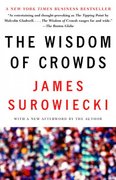Its an economics problem solve it
1 . Consider the following two-players extensive form game: [21.0) (-110) {11.1) {4,3} {it Find the pure-strategy Nash equilibria of such a game. {ii} Find the Subgame Perfect equilibria of such a game. {iii} Discuss why some of the Nash equilibria of the game are not Subgame Perfect. 2. Consider the following Stackelberg duopoly: firm 1 chooses output first. then firm 2 observes the output chosen by firm 1 and decides its own output. The market inverse demand is p = 1 ql so. where q; is firm i's output. Each firm incurs a fixed cost of 1,18 if it produces positive output tothenvise. its costs are zero]. Once the fixed cost is paid it costs each firm zero to produce each additional unit: variable costs are zero. Find the unique Subgame Perfect equilibrium pure strategy Nash equilibria of this game 3. Consider two players, a seller and a buyer. and two dates. At date 1. the seller chooses his investment level I :3 c at cost I. At date 2, the seller may 1 sell one unit of a good and the seller has cost out of supplying it. where glib} = :x::-, c' r. o, and cm] is less than the buyer's valuation for the good. Assume no discounting, so the socially optimal level or investment 1" is given py1+dtlfl = 0. {it Suppose that at date 2 the buyer observes the investment 1 and makes a take-it-or-leave-it offer to the seller. What is this offer? What is the subgame perfect equilibrium of the game? {ii} Can you think of a contractual way of avoiding the inefficient outcome of [i]? {Assume that contracts cannot be written on the level of investment L} 4. Consider the following two players game. First player 1 can choose either Stop or continue. If she chooses Stab then the game ends with the pair of payoffs [1. 1). If she chooses Continue then the payers simultaneously and indepen- dently announce an integer number between it and 100. and each player's payoff is the product of the numbers. Formulate this situation as an extensive form game and find its subgame perfect equilibria. 5. Consider the following three-players extensive form game: R (1, 2, 0) A. B (2, 1, 0) (3, 2, 3) (1, 4, 2) (i) Construct the normal form associated with this extensive form game. (ii) Find the pure-strategy Nash equilibria of such a game. 2 (iii) Find the Subgame Perfect equilibria of such a game. 6. Two firms 1 and 2 Bertrand compete to employ a worker. The worker's expected output in firm 1 is m, while in firm 2 is my, where mi > my > 0. The two firms simultaneously and independently submit wage offers to the worker. The worker observes the wage offers and decides which one to accept. (i) Formulate this situation as a game in extensive form and find the set of Subgame-perfect equilibria of this game. Assume now that when the worker is employed by firm i (i = 1,2) he gen- erates a positive externality to firm - which increases firm -i's payoff of an amount of, where 0 by > 0. (ii) Find the set of Subgame-perfect equilibria of this new Bertrand game. (iii) Does the equilibrium choice of employer by the worker coincides with the allocation of the worker that a central planner faced with the same payoffs will choose? Discuss.3. Consider two players that interact for two periods. In each period. the two play- ers play the following stage game. denoted game P1, {a 1rersion of the pits- cners' dilemma game): Assume that both players discount the future with a common discount factor .5 such that 2










